If you have a yard or garden in a range where bluebirds live (which is all of the United States and North America, down to Mexico, up to Canada, and over to New Foundland), you’ll certainly want to consider inviting bluebirds to your yard.
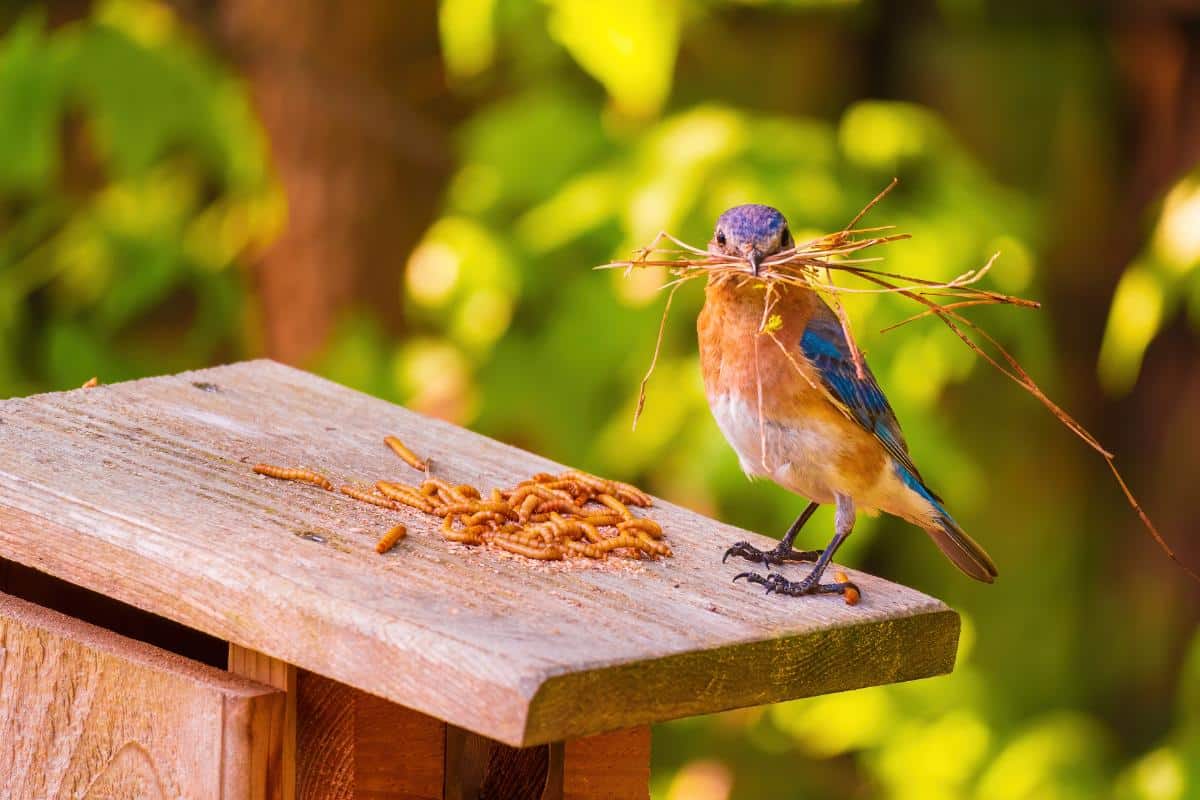
These pretty little birds can do an awful lot of good for the home gardener.
Jump to:
- Why Bluebirds? How Can They Help?
- Why Bluebirds Should Matter to You (besides the fact that they’re super bad bug eaters)
- How To Attract Bluebirds for Yard and Garden Pest Control
- 1. Build them homes and nesting spaces.
- 2. Mounting matters.
- 3. Get bluebird houses out early.
- 4. Clear larger spaces in your yard.
- 5. Place houses in wide open spaces.
- 6. Discourage competitors from nesting in bluebird homes
- 7. Stop or at least reduce pesticide use.
- 8. Give them perches for hunting near food sources.
- 9. Plant shrubs for habitat on the edges of open spaces.
- 10. Leave natural cavities in your yard when it is safe to do so.
- 11. Keep boxes up year-round.
- 12. Put out bird baths and water features.
- 13. Plant native shrubs and berries for winter food.
- 14. Let seed-bearing plants stand through winter.
- 15. Feed supplemental winter foods that target bluebirds' diets.
- 16. Encourage neighbors and local businesses and organizations to get on board.
Why Bluebirds? How Can They Help?
There are a number of benefits to having bluebirds in your yard and garden. Chief among those reasons is pest control – bluebirds eat a diet that is 70% protein from insects and pests, and they do it at the most critical time of year when your yard and garden need the most protection from damaging insects, worms, and larvae.
The other 30% of the bluebird diet comes from eating small amounts of small fruits and berries. The majority of these are wild berries from plants like sumac, chokecherries, and winterberries.
Though bluebirds may eat small berries (like raspberries), they don’t usually eat many, and the benefits of pest and disease control outweigh the limited losses. (You can also take steps to keep them away from these few crops while having most of your garden plants and vegetables benefit from having bluebirds around.)
For more about the bluebird diet and the specifics of why you want to attract bluebirds to your yard or garden, check out our article here: 8 Reasons Bluebirds Are Good For Yards and Gardens
Why Bluebirds Should Matter to You (besides the fact that they’re super bad bug eaters)
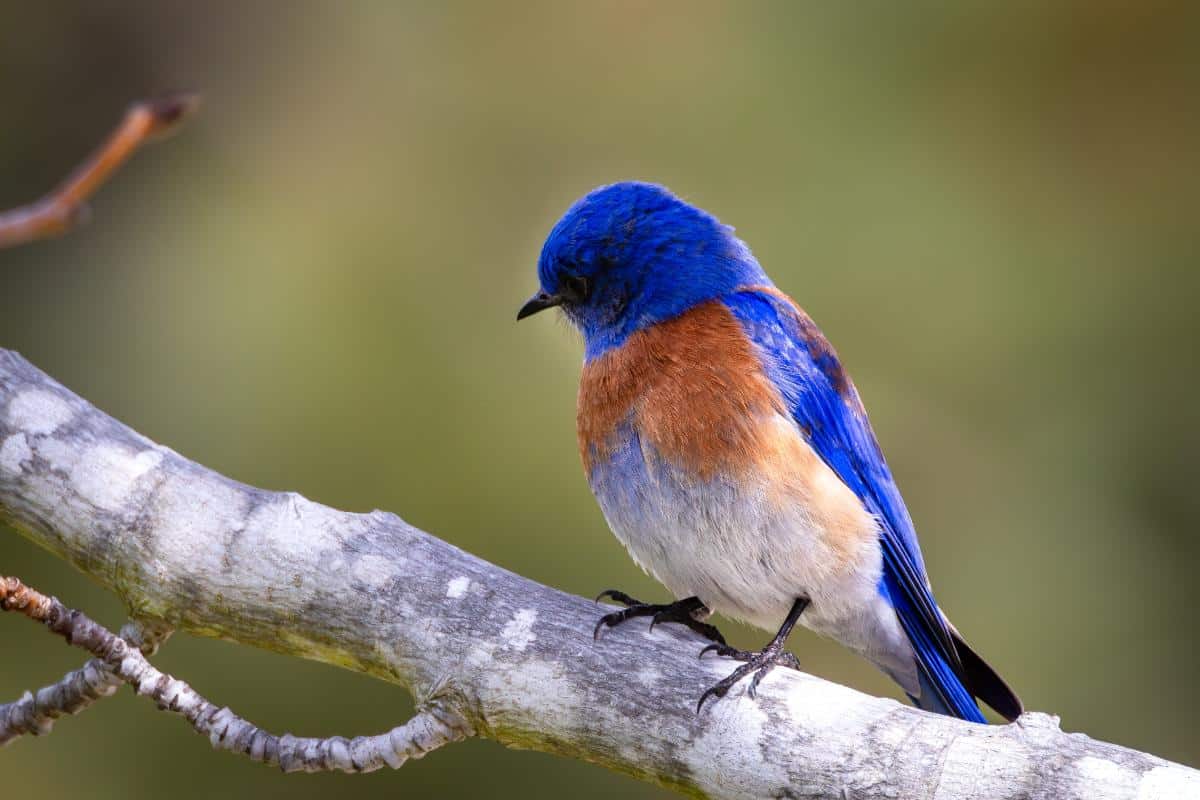
First, there’s something to know about bluebirds. Since the 1800s, they’ve been under pressure, and their populations have been in decline. The biggest reason for this was the arrival of the European starlings and sparrows to their native habitats.
All of these birds are cavity-nesting birds. They live in empty spaces and hollowed-out holes in trees, such as those often made by woodpeckers. Starlings and sparrows took over bluebird nesting sites, and the birds just weren't competing.
Add to that the loss of habitat and increased use of herbicides and pesticides, and the situation was bleak for bluebirds. That is, until about the 1960’s and 70’s.
It was at this time that the benefit and importance of native bluebirds was recognized, and groups took measures to support the birds. They helped them reclaim their spaces and conserve the species. The conservation efforts were quite successful, too, and the bird is no longer considered mortally threatened, although they can still benefit from our support.
How To Attract Bluebirds for Yard and Garden Pest Control
There are a number of things that you can do to draw bluebirds to your yard and your garden:
1. Build them homes and nesting spaces.
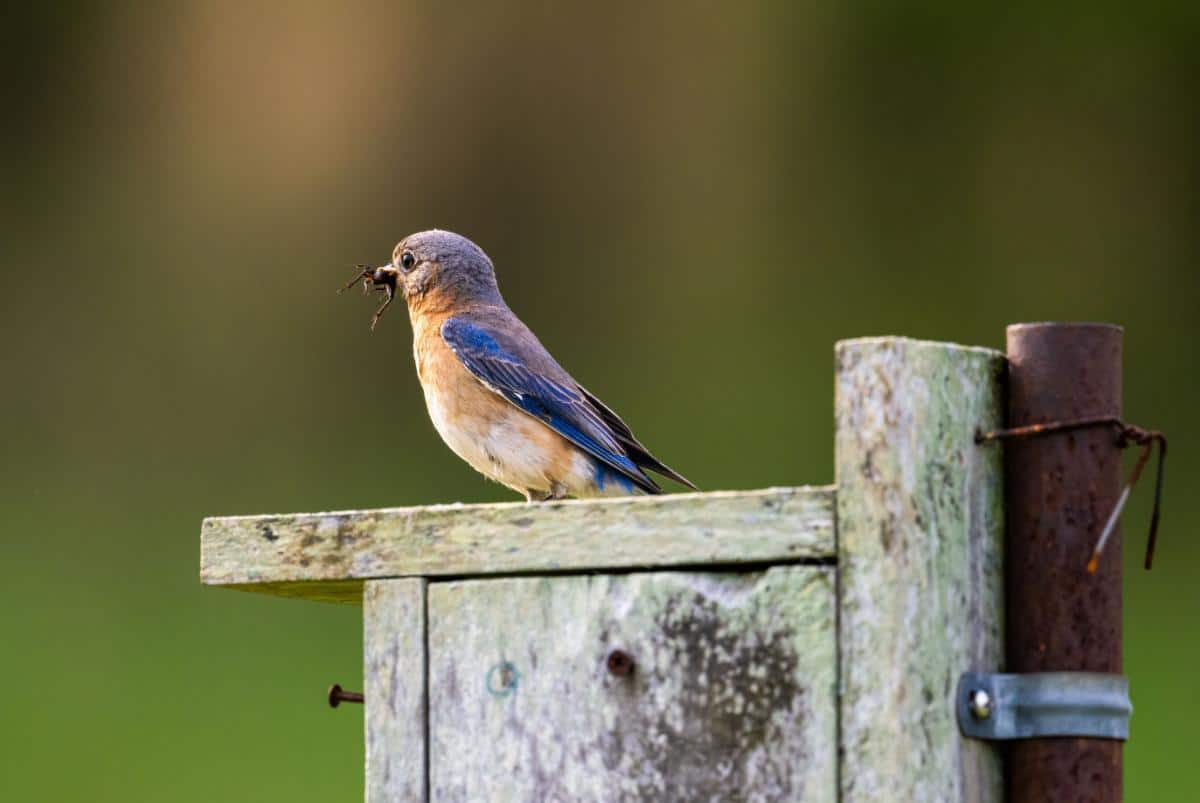
One of the reasons we’ve seen a decline in bluebirds – in fact, arguably the biggest reason – is that they have been pushed out by non-native bird species like starlings and swallows. If you can help them reclaim their territory by providing them with more places to live, this can go a long way to drawing (and keeping) bluebirds in your yard and garden.
Bluebirds are cavity nesters and there are specific designs that prove successful for bluebirds, so make sure you build or buy the right type of box. And then, take pains to keep swallows and starlings out of it.
2. Mounting matters.
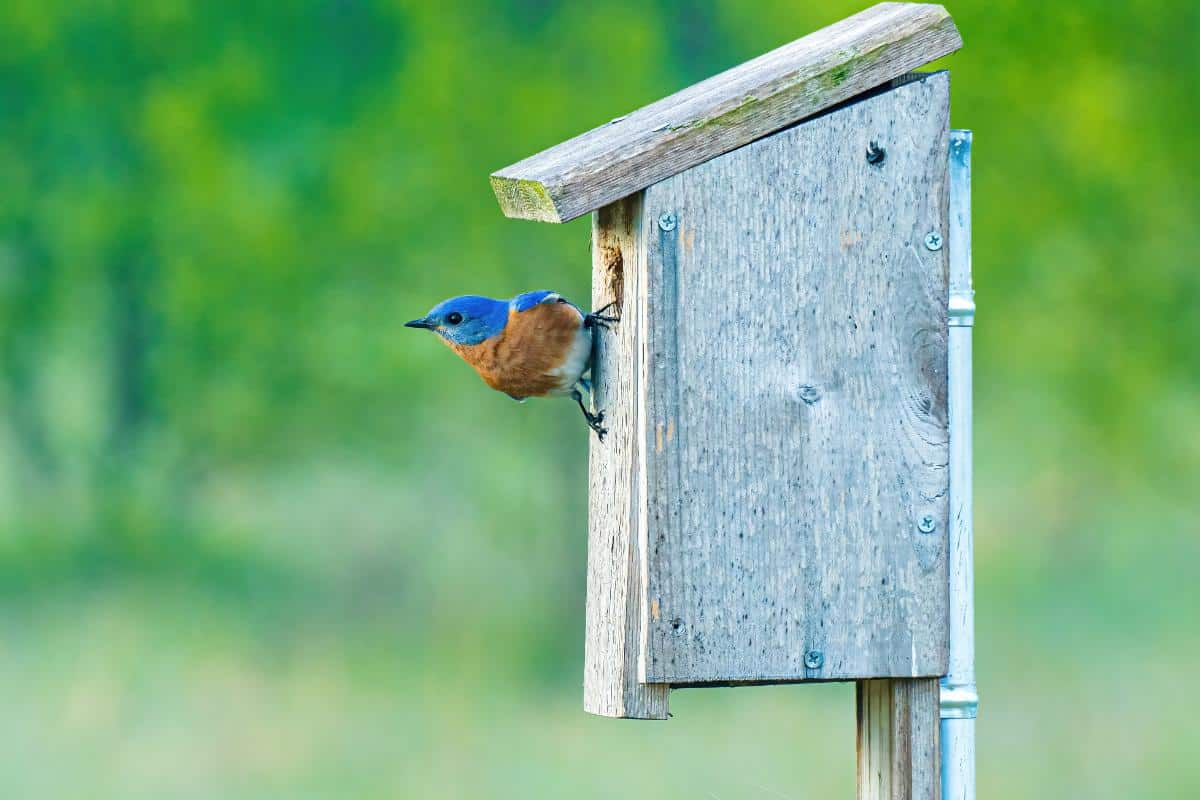
The mounting of the bluebirds’ home matters, too. Bluebird houses should be mounted on a tall smooth pole, so they feel safe, and so they are safe. This helps to protect them from predators, rodents like squirrels and mice that wreak havoc on nests, and competitors.
Smooth, tall pole mounts also deter animals such as cats, snakes, and raccoons, all of which will want either the birds or their eggs or both.
Mount the house on a tall, smooth metal pole so the entrance is about five feet off the ground.
3. Get bluebird houses out early.
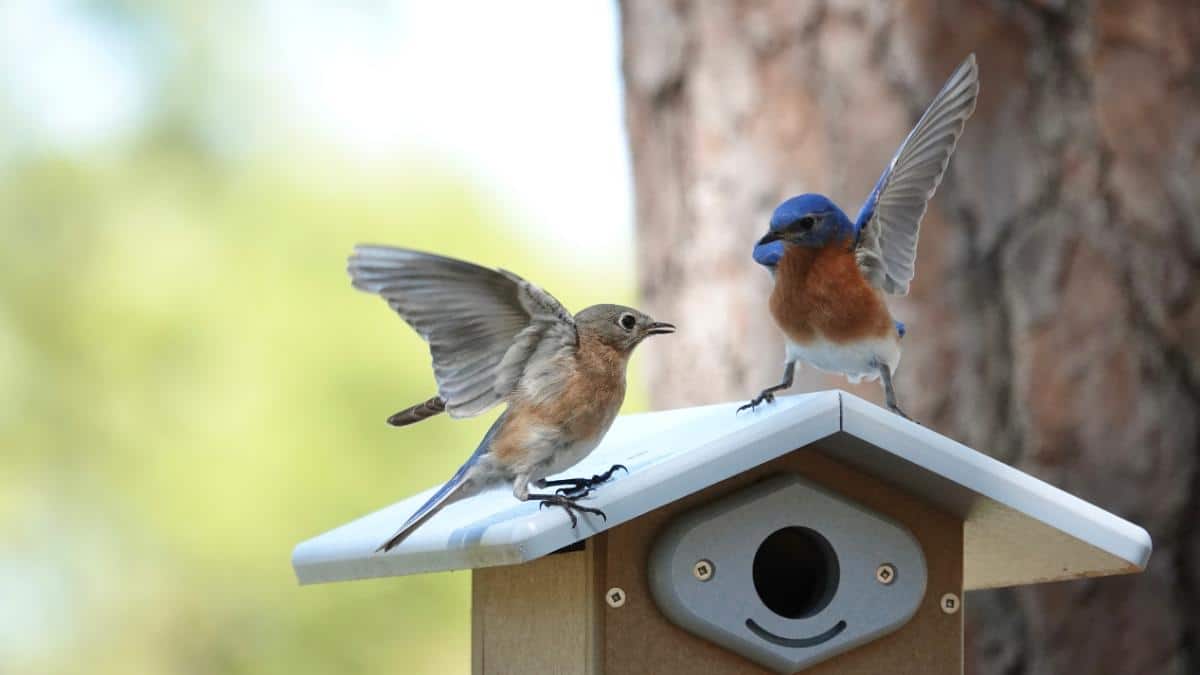
Bluebirds start scouting for new homes and nesting sites early in the year – January, in some cases. They usually have their stake claimed by March, even in more northern areas.
So, if you want bluebirds around through your growing season, you’ll need to have your houses out early so they choose yours as the place to live.
4. Clear larger spaces in your yard.
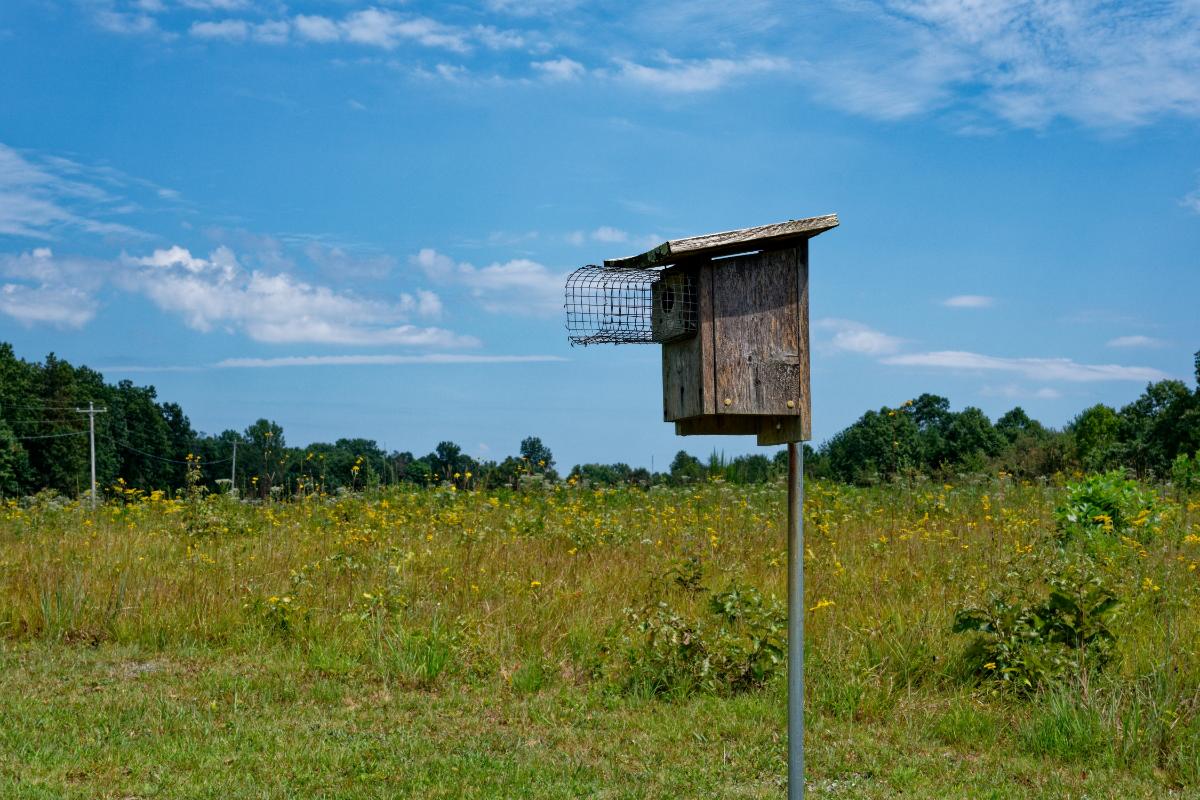
Bluebirds prefer wide, open, grassy areas. Ideally, they want one or two acres of open space so they can find enough food for the season.
If you don't have that much space in your yard, consider what’s adjacent to you. Maybe you and your neighbor’s yards together do.
Choose your placement carefully. For example, you can place the house on the edge of your yard abutting your neighbor’s. The birds will view it as all one space. Bluebirds don’t follow property lines like we do!
5. Place houses in wide open spaces.
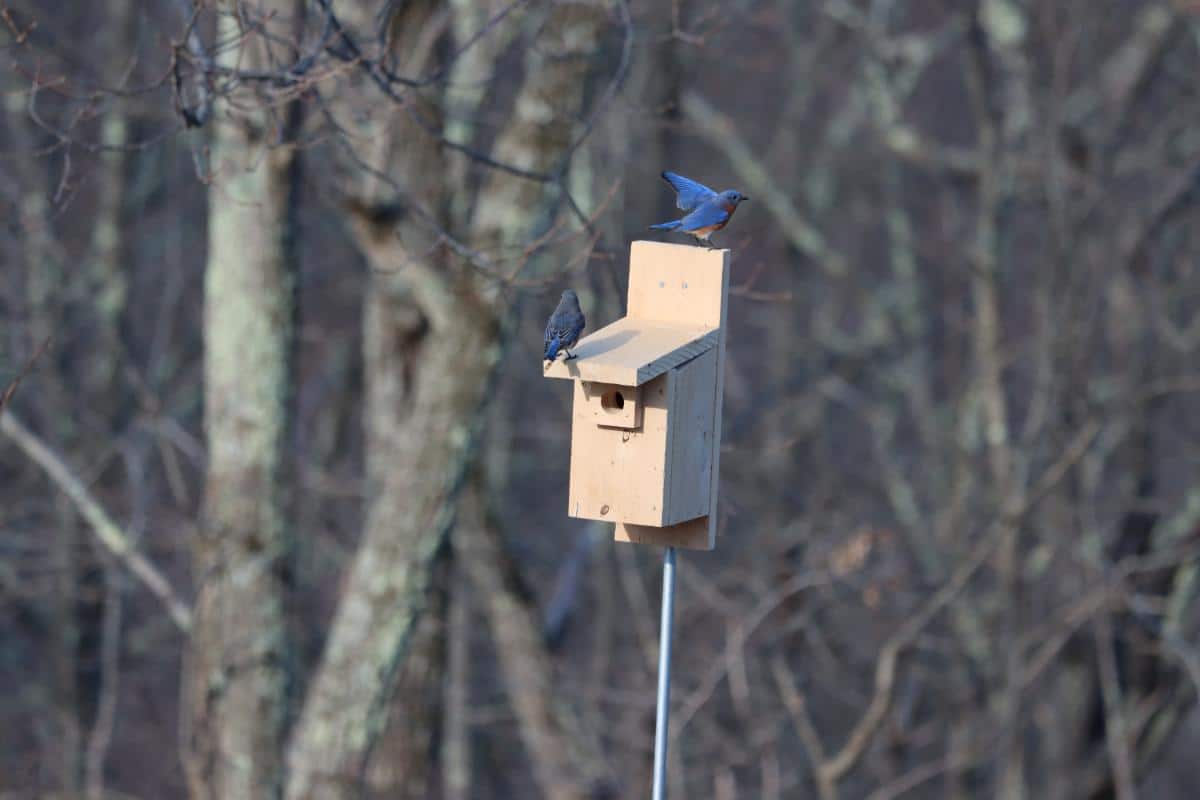
Bluebirds prefer their homes to be out in the open so they can see threats and so they can survey the land for insects and food sources. They will be attracted to homes and birdhouses in open spaces, where they can see there is plenty to forage from.
6. Discourage competitors from nesting in bluebird homes
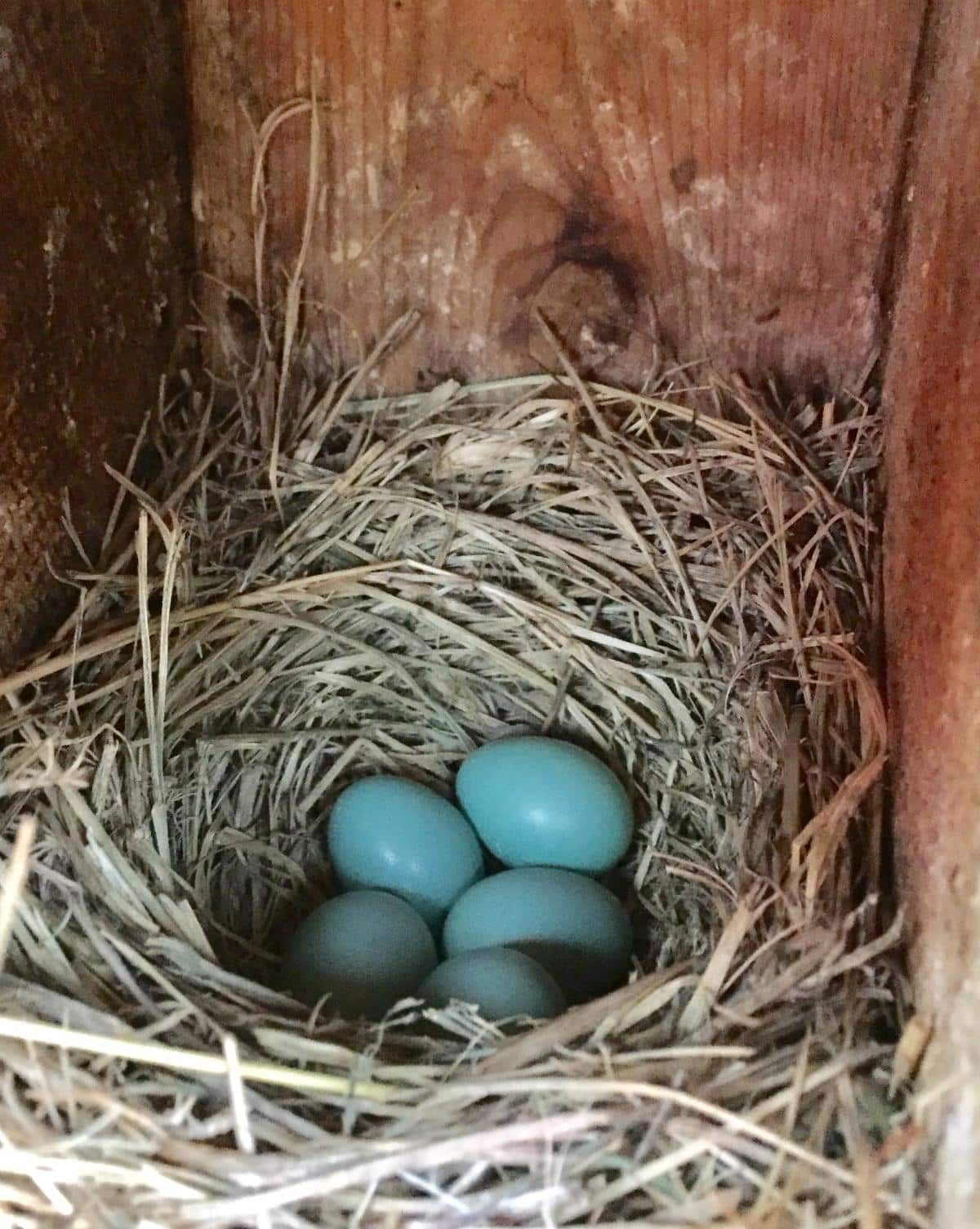
Get to know a bit about other birds, like sparrows and starlings.
Learn how they build their nests and what they use to build them. This will help you identify whether it is a bluebird couple or other birds using your bluebird homes.
Know what their (bluebird) eggs should look like. You can often tell the difference between different birds’ eggs by color and size.
If you see or know other bird invaders are taking over, kick them out.
7. Stop or at least reduce pesticide use.
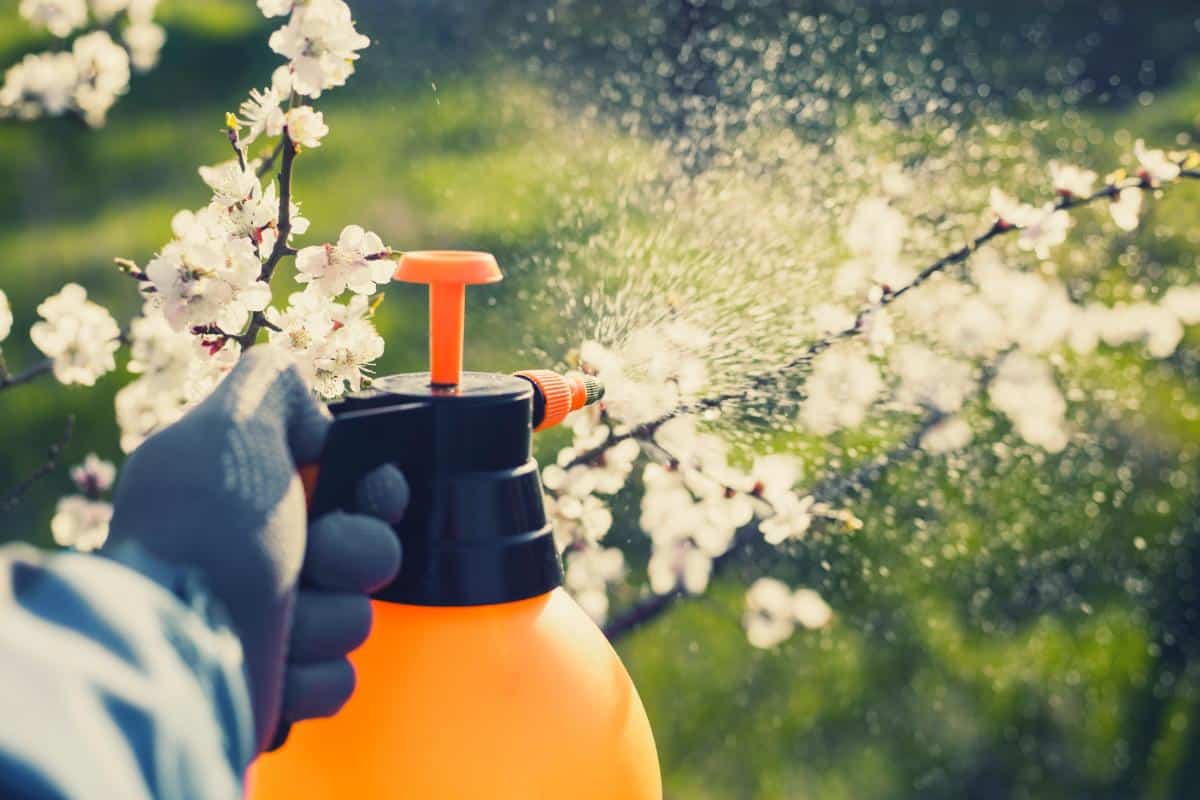
The point of having bluebirds around for your yard and garden is to keep insects controlled, naturally. Bluebirds eat loads of insects.
So that you don’t kill their most important food sources and reduce or stop pesticide use altogether. Insects and larvae are bluebirds’ major food source from the late winter/early spring through late fall (70% of their diet has to be protein for the adults and their offspring to survive!).
Another reason not to poison insects is so that you don’t poison the birds when they eat insects on or around plants that were sprayed.
If you have a large pest infestation and must use something, make it organic and choose something that is safe for birds. Neem oil is considered safe for birds and is non-toxic. There are some other options, too.
Still, you should spray even safer and organic pesticides sparingly so that the bluebirds still have plenty of food. You should find that over time, you can use less and less pesticides as beneficial bird populations grow and help regain the balance in your garden’s ecosystem.
You can consider overplanting food crops, too, so that the impact of losses to insects is lessened.
Less spray and chemicals are good for the birds and good for you, too!
8. Give them perches for hunting near food sources.
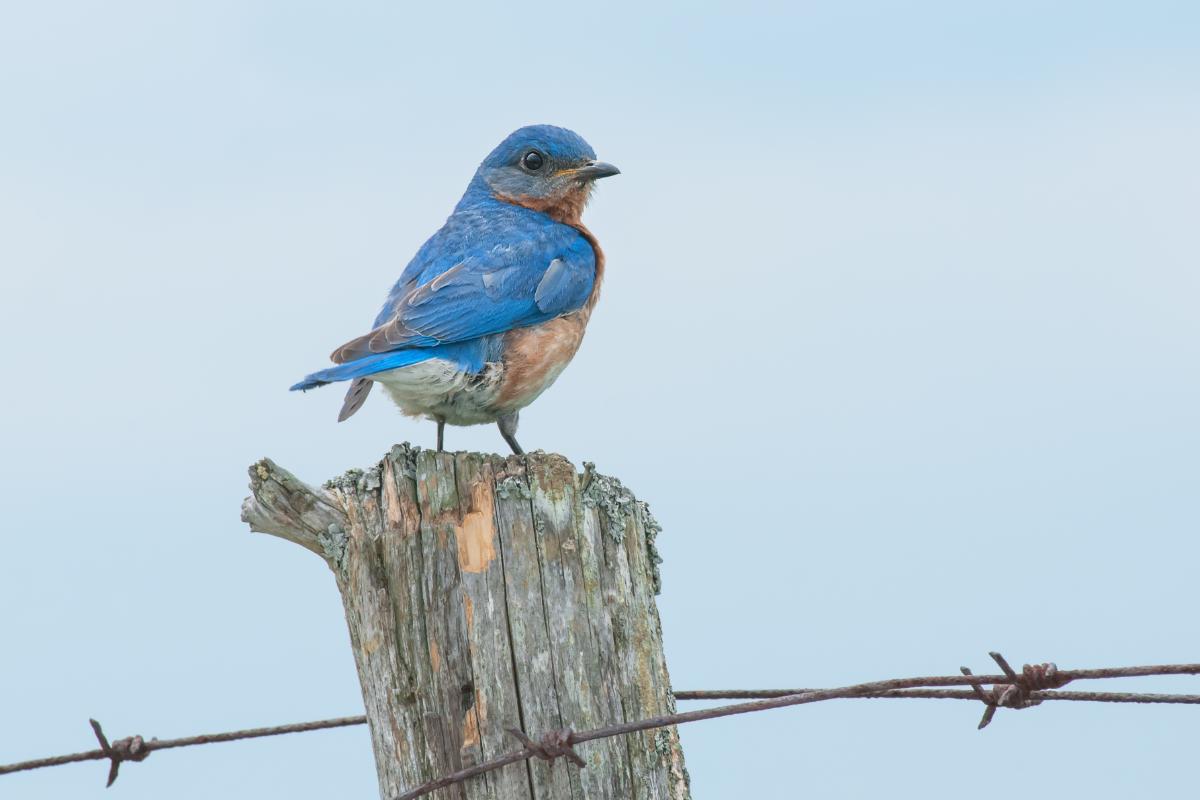
Bluebirds need places to sit to scout for insects and food sources. Place strategically placed perches and posts for them to hunt from.
If you place perches near the areas that you want the birds to protect from insects and pests (such as near your garden area), this should help to naturally control pest populations in your garden and landscape.
T-shaped posts with a four to six inch perch on the top work well, as do fence posts and fences.
9. Plant shrubs for habitat on the edges of open spaces.
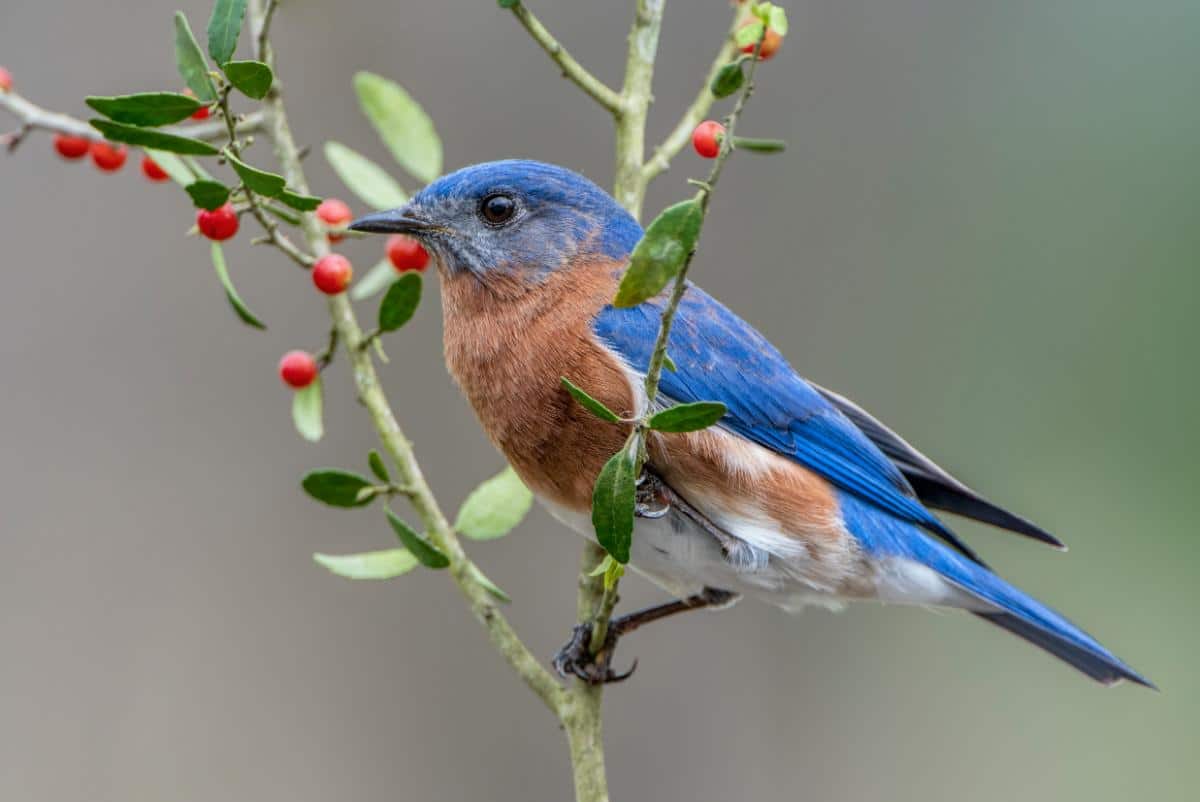
Having shrubs along the edges of open spaces gives bluebirds a place to hide from larger birds and predatory birds while also having a place to perch and look for food.
Many native shrubs and landscape bushes make good habitat spaces for bluebirds. These should be in addition to housing.
Choose native species whenever possible. Bonus points if they can do double-duty and work as late-season and winter food for your bluebirds!
10. Leave natural cavities in your yard when it is safe to do so.
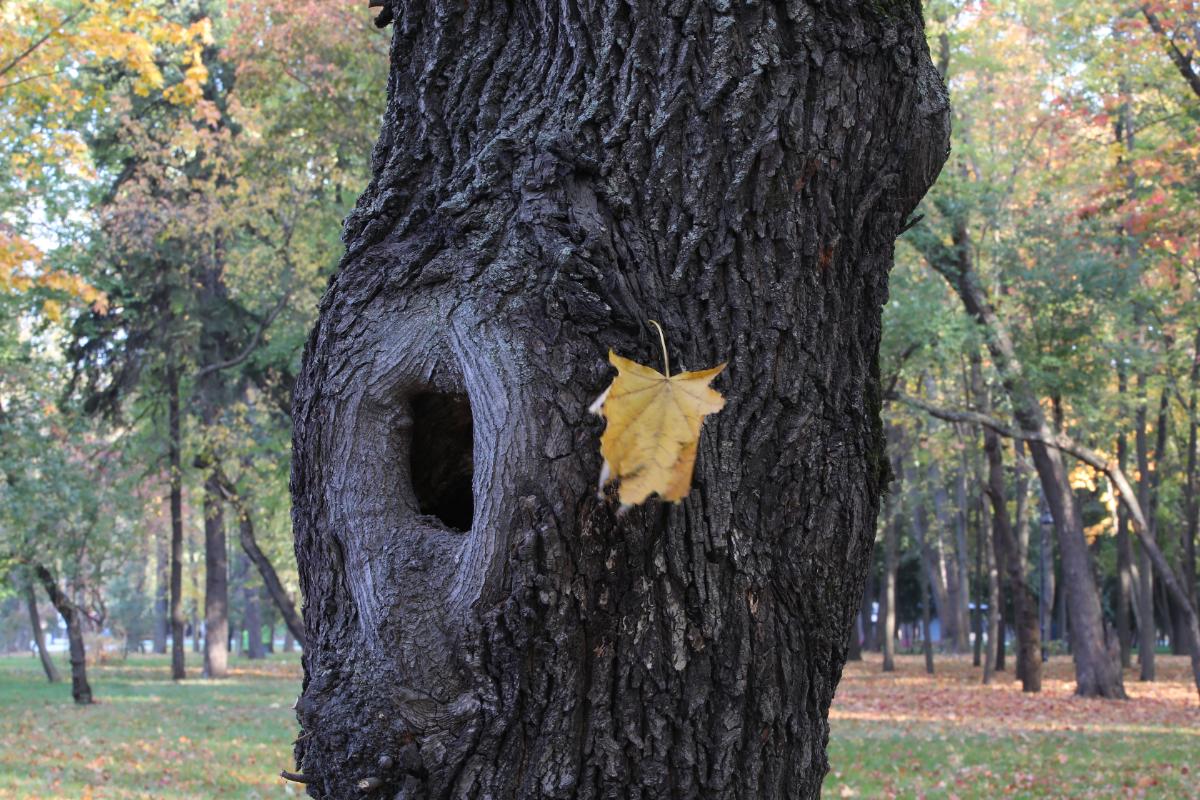
If you have old trees with hollowed-out spaces or cavities (such as those made from woodpeckers), leave them if you can. These are the perfect homes for bluebirds (their natural housing, in fact).
If the trees seem about to fall or are unsafe, it’s better to remove them and put up houses, but when you can, leave these natural houses for the birds.
11. Keep boxes up year-round.
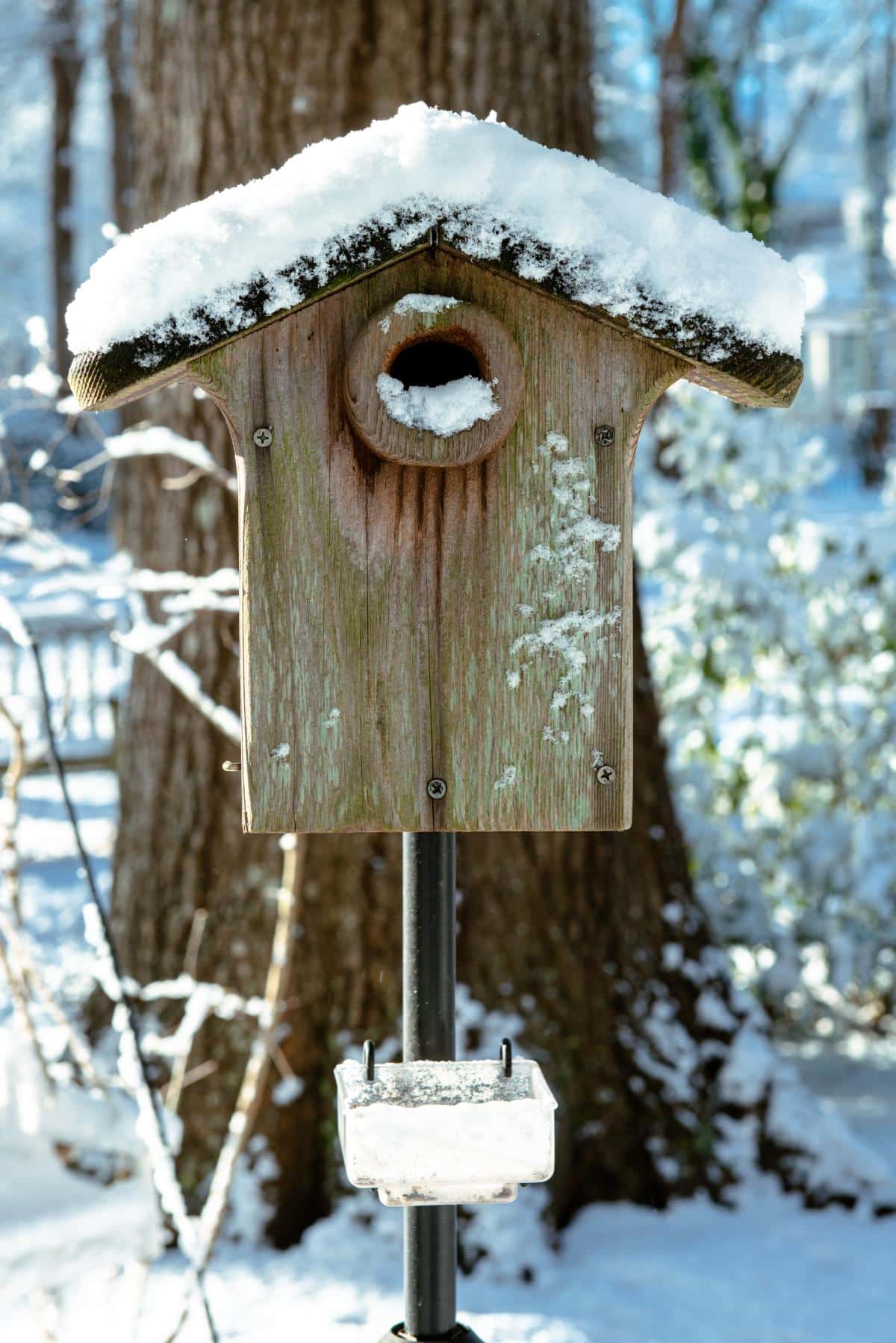
Bluebirds are migratory birds. If you live in the north, they may or may not spend the winter with you. However, with the warming and changing climates and more winter food available in a lot of areas, bluebirds are staying year-round in places that they used to leave for the winter (at least some of the population is).
It’s smart to leave your bluebird nesting boxes up all year, just in case some birds stay and they need them. In fact, you can help them out even more by winterizing your bluebird boxes – caulk or plug ventilation holes and turn the boxes upside down so the opening is at the top. These things help to keep the boxes warmer in winter.
The other reason it is smart to keep bluebird boxes up year-round is that bluebirds return to their summer homes quite early in the spring. In a lot of places, it’s still actually winter when the birds come back.
Bluebirds may start moving back as early as January, and they may start nesting and brooding as early as February (depending on where you live).
This makes it hard to get your boxes up in time for the birds to build their nests. If you don’t have a home for them on or near your property –whether natural or a manmade box or house – they will make their spring through fall home somewhere else.
12. Put out bird baths and water features.
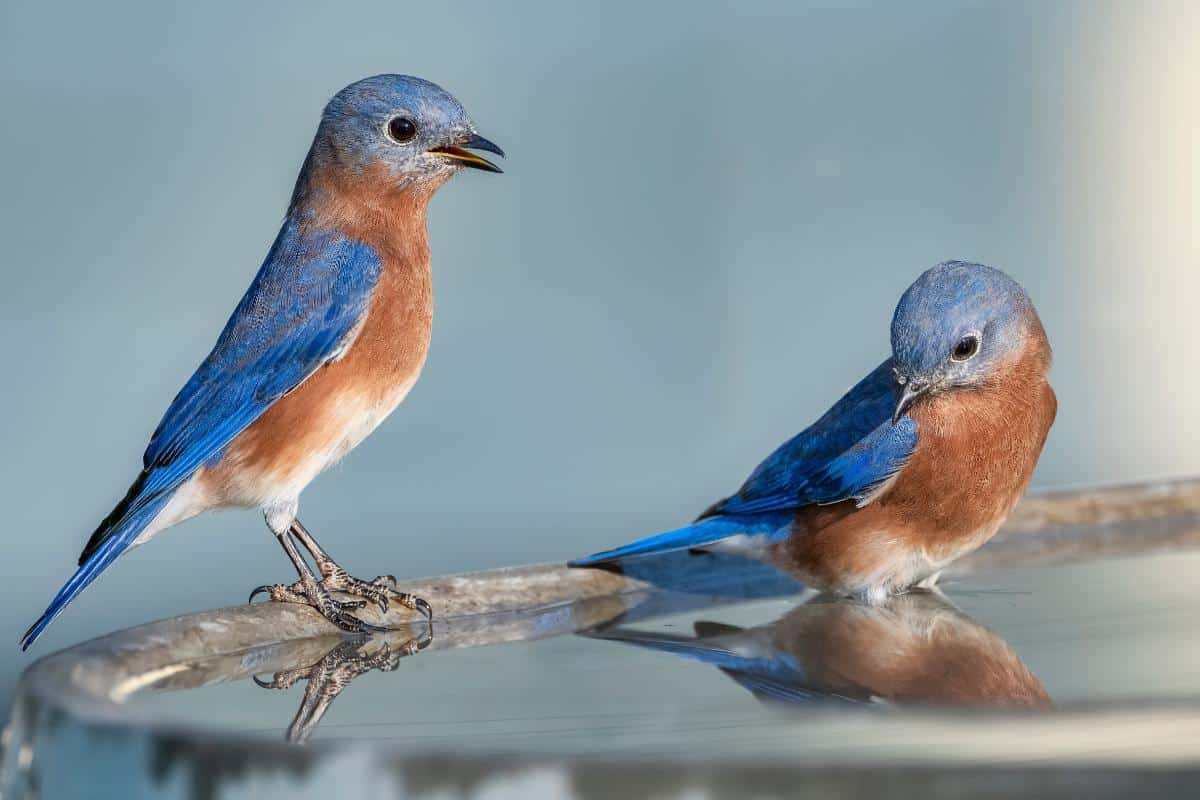
Bluebirds love water. And they need it, of course!
Birdbaths and water features are a big draw to bluebirds. They especially like them if they can hear the water (for example, from a fountain). This will help attract birds to your water sources.
Keep the water fresh and clean, a couple of inches deep.
If you can, also keep water out through the winter. This is very helpful to overwintering bluebirds. Winter water sources can be scarce, and having what they need year-round will help convince them that your yard is the perfect place to make a home.
Heated bird baths are one way to ensure open water for bluebirds all year long.
13. Plant native shrubs and berries for winter food.
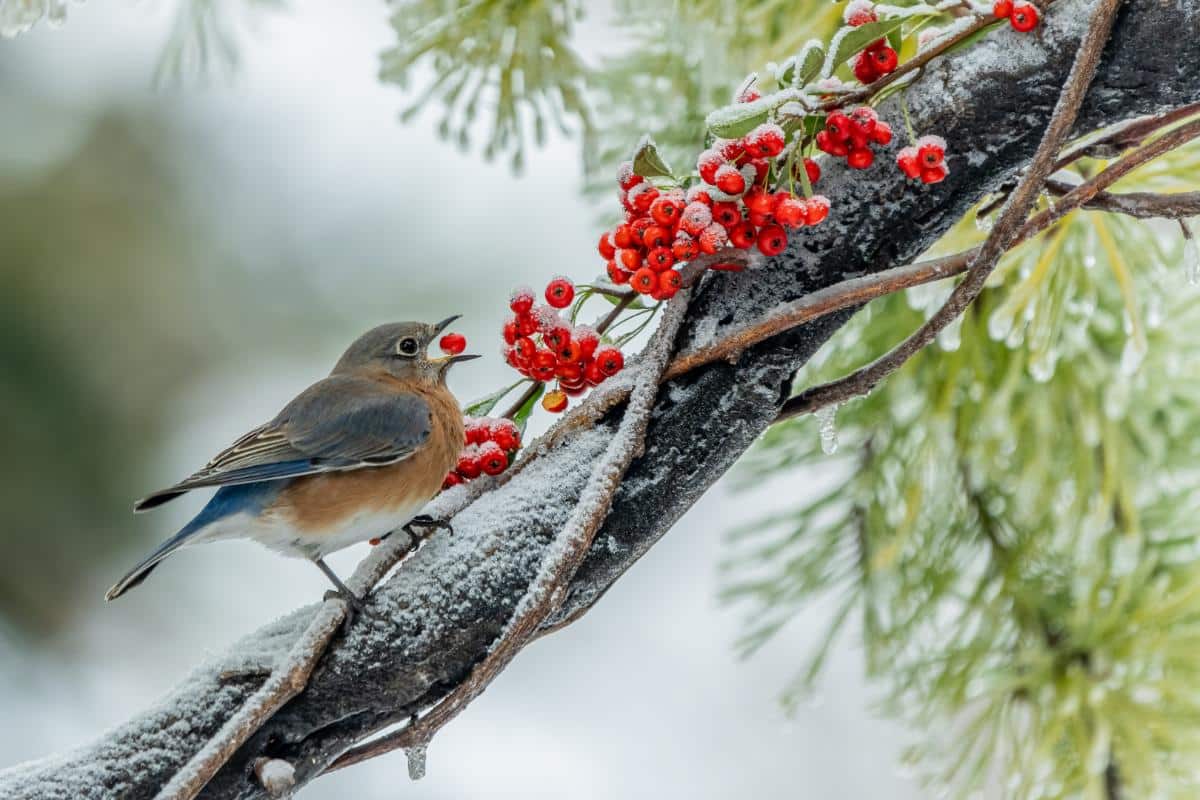
Bluebirds switch to a diet of mainly berries and seeds in the fall when insect numbers decline, and insects go dormant. They prefer to eat berries from bushes.
Because it is winter when they seek out berries the most, their preferred foods are bushes that hold their berries even after they go dormant. Winterberries and holly, for example, are some of their natural favorites.
When you’re planting in your yard, think about what trees and shrubs can do double duty. Make them native plants that the bluebirds are looking for.
14. Let seed-bearing plants stand through winter.
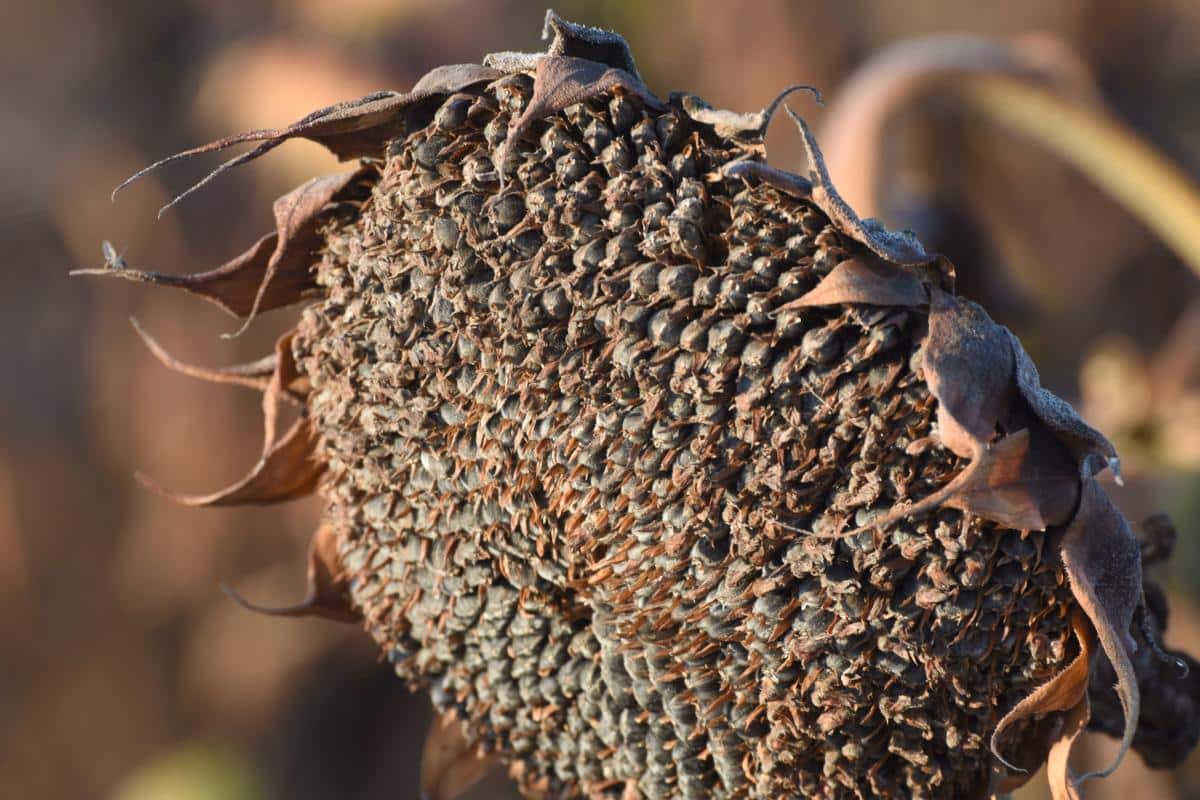
Instead of cleaning out the old, dead stalks and dried up seed heads on your garden plants in the fall, leave them to stand for the birds instead.
Things like sunflowers, with their heads dried and full of protein-rich seed, are beneficial to bluebirds. They give them both a perch and a source of food.
Again, natural sources of food are preferable to bird feeders for bluebirds, so they’d rather get their sunflowers and seeds from standing dead stalks than from the bird banquet. They will be safer grabbing and going from these sources, too.
Many smaller flowers and herbs can be good seed sources in winter ,too (like rudbeckia or echinacea or coneflower, for example). So save the cleanup for the spring when the bugs are buzzing and the seeds have been eaten, and leave this food for the birds – the bluebirds!
15. Feed supplemental winter foods that target bluebirds' diets.
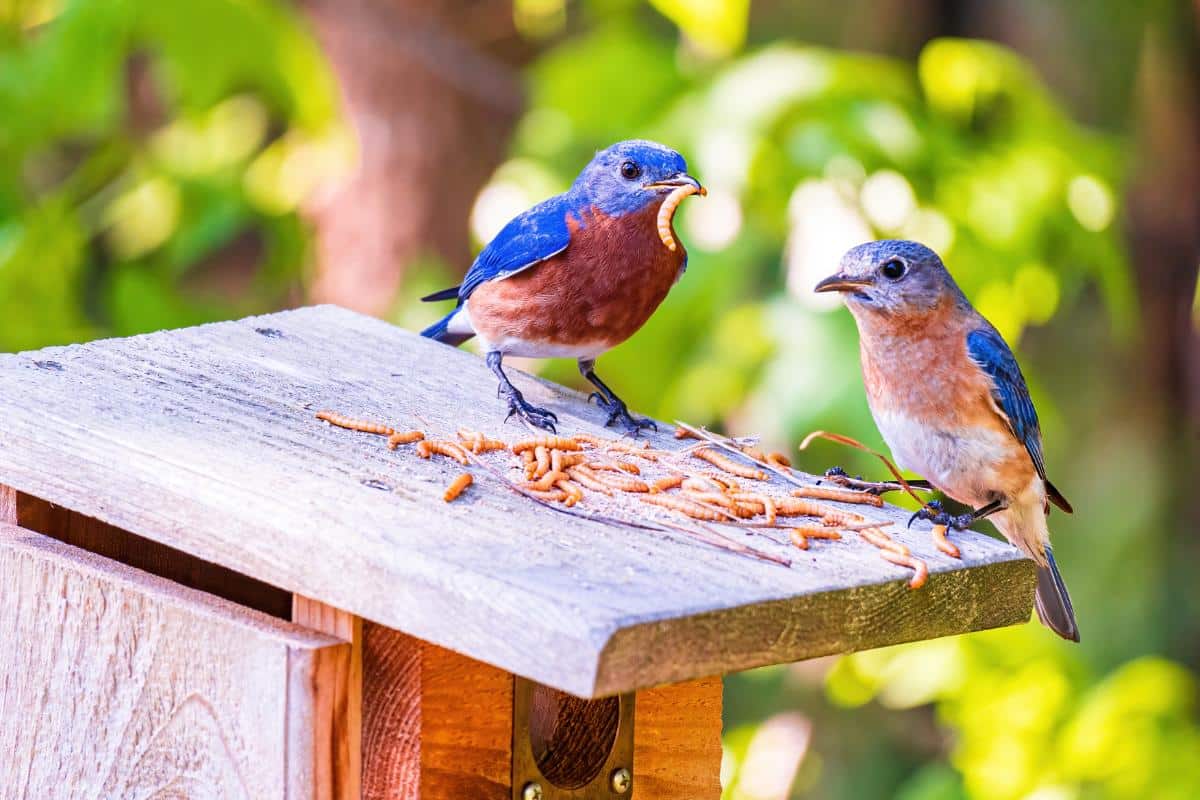
Supplemental bluebird foods include sunflowers, mealworms, seeds, softened raisins and dry currants, berries, lard and lard mixed with other ingredients, suet with corn, cornmeal, peanut pieces, and peanut butter.
These should be fed in wider open areas. Bluebirds will sometimes come to other bird feeders, but they prefer to eat out in the open where they won't have to fight off and compete with other winter birds, many of which will be bigger in size and population and make it hard for bluebirds to feed there.
A good way to feed bluebirds in winter is in a protected feeder that only small birds like bluebirds can get into (but a clear one in which the feed is clearly visible), or on an open platform feeder.
If you are able, figure out which feeds other birds don’t care for that your bluebirds do like, and put those feeds in the bluebird feeders. Feed other birds’ favorites in their own feeders away from the bluebirds’ feeding grounds.
Given the choice, bluebirds will prefer to eat from natural sources like berries on winter bushes and seed heads, so you can wait to feed them until you see the resources running out or just feed them through the harshest parts of winter or during snow and ice storms when it can be hard for them to find and fly to food.
16. Encourage neighbors and local businesses and organizations to get on board.
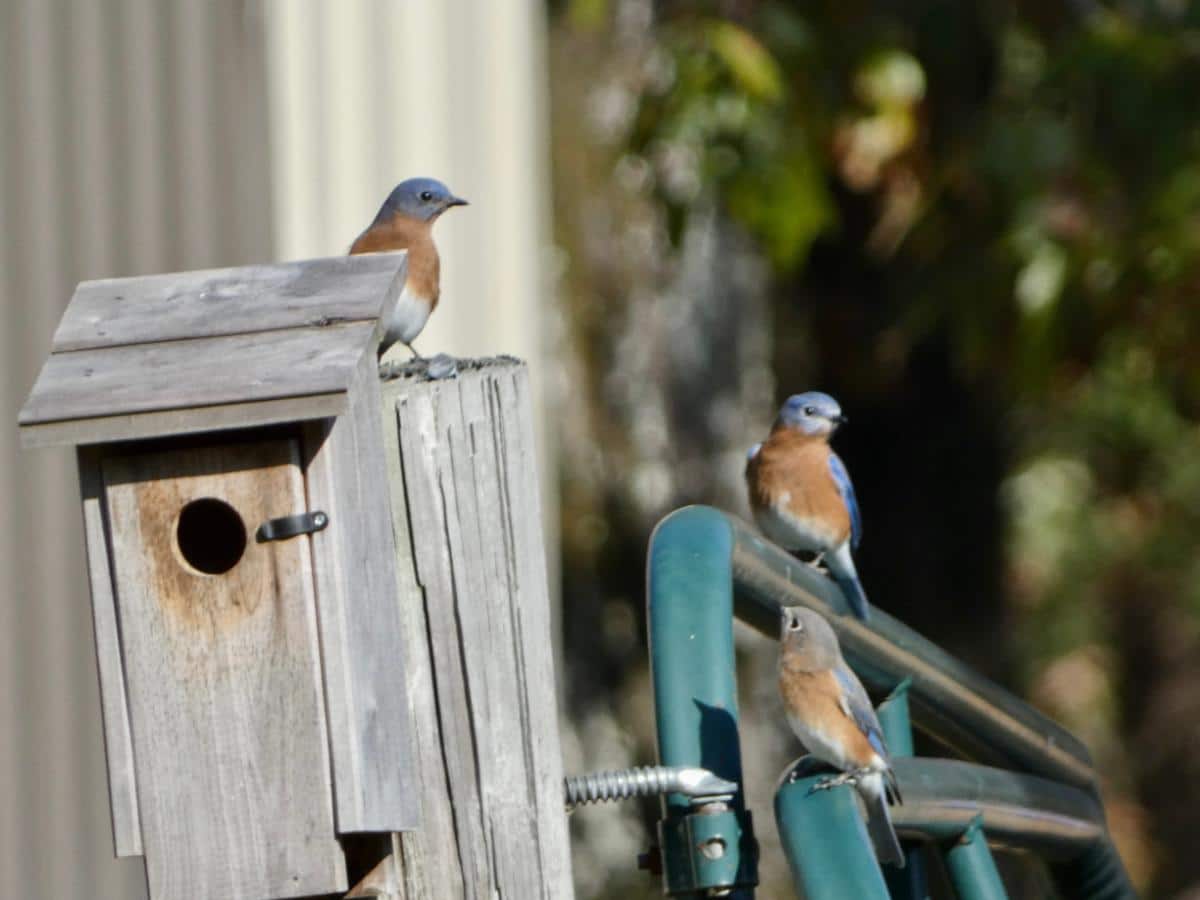
The higher the population of bluebirds in an area, the more likely they are to move into your yard and garden. So encourage others around you to get on board and start welcoming bluebirds, too!
Places like golf courses, church yards, cemeteries, and parks with open grass and fields are good places to put houses to attract bluebirds. If you’re in a more urban area, this is a good way to find the open space that bluebirds need and encourage populations to live near you.
Make your bluebird efforts a community effort, and the benefits can be enjoyed by all!

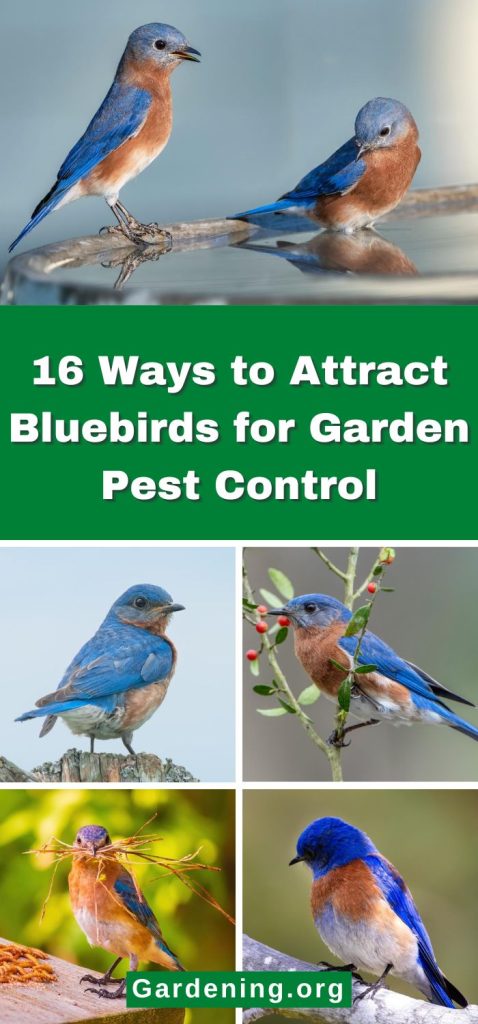
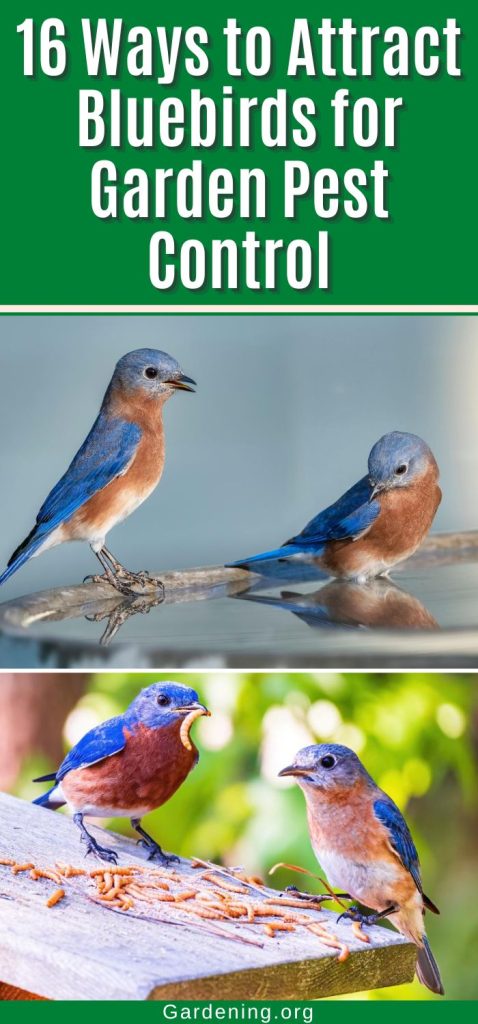
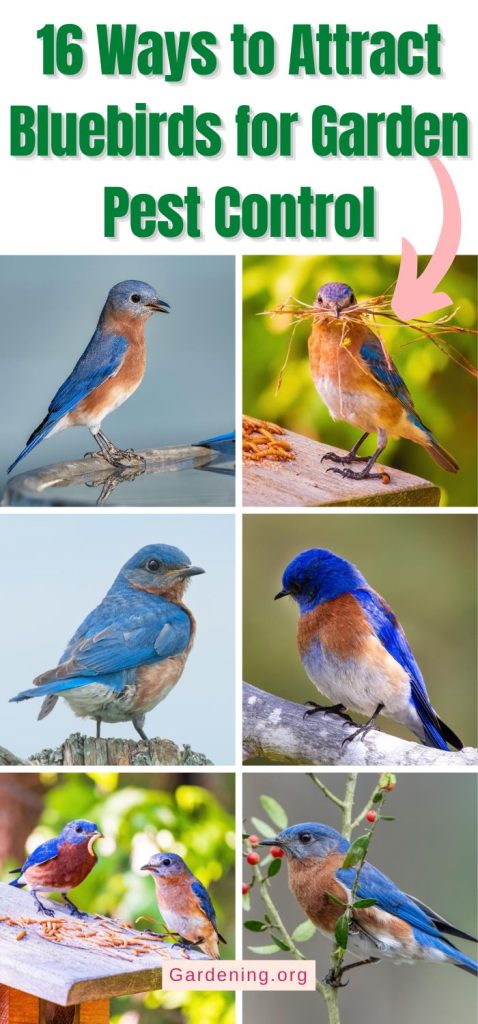
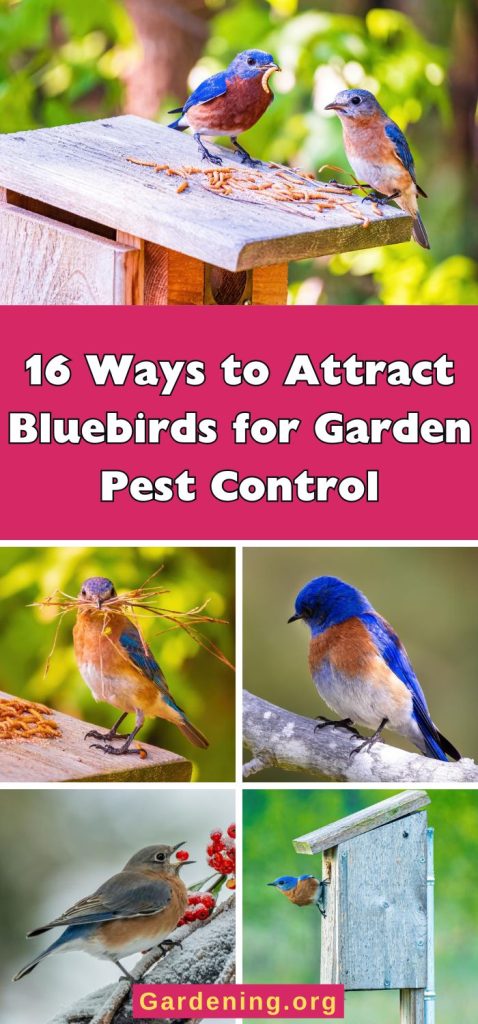
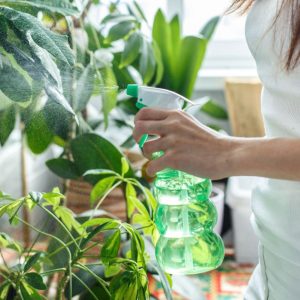
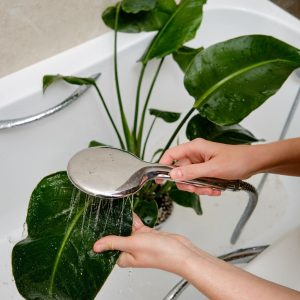

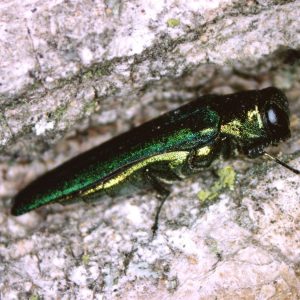
Patricia Easley
Trying to attract Blue Birds. Want information